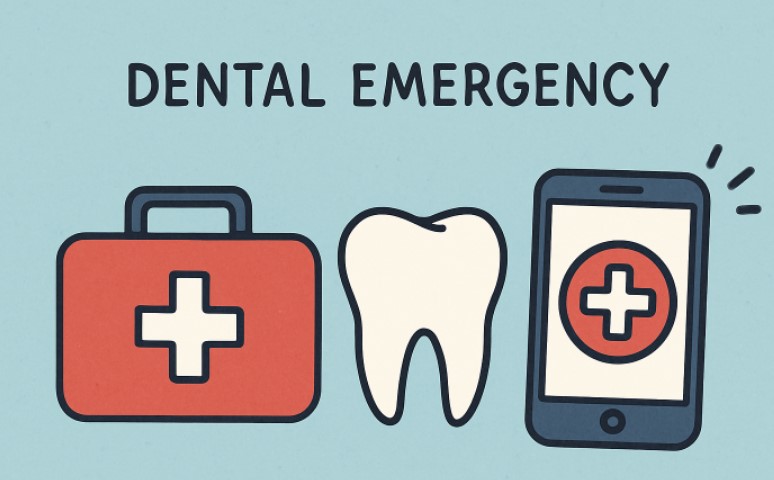Dental emergencies can happen when you least expect them, causing immediate pain, discomfort, and anxiety. Whether it’s a sudden toothache, a knocked-out tooth, or a lost crown, knowing what to do in the critical first moments can be the difference between saving and losing a tooth. For residents needing urgent care, understanding quick-response practices and having resources like Jamestown Emergency Dentistry at your fingertips are essential to handling these stressful moments effectively. Preparation and knowledge can go a long way in protecting your oral health.
Most dental emergencies require swift action and sound judgment. It’s helpful to familiarize yourself with the types of urgent dental situations, their causes, and the appropriate first steps. Proper handling can help reduce pain, prevent further damage, and improve outcomes when you finally reach the dentist. If you are ever in doubt, err on the side of caution and contact a professional.
Common Dental Emergencies
Table Contents
Recognizing a true dental emergency is crucial for timely and appropriate care. Some of the most frequent urgent dental issues include:
- Toothaches: Severe, persistent pain could signal infection, decay, or an abscess that needs immediate attention.
- Knocked-Out Teeth: Accidents or injuries that fully dislodge a tooth require urgent intervention to improve the chances of saving the tooth.
- Chipped or Broken Teeth: Whether from biting a hard object or trauma, cracks, chips, or breaks can expose sensitive pulp and invite infection.
- Lost Fillings or Crowns: When previous dental work comes loose, the underlying tooth is vulnerable to sensitivity, decay, and further damage.
- Abscesses: Deep infections in the tooth, gums, or bone can lead to swelling, pain, and more serious systemic health risks if left untreated.
A wide range of other dental injuries and infections—from fractured jaws to soft tissue injuries inside the mouth—can also fall into the category of emergencies. Acting quickly to address any of these situations improves the chances of a positive outcome and reduces the risk of complications.
Immediate Steps to Take
How you respond during the first few minutes of a dental emergency can make all the difference. The following tips will help you manage pain, prevent further harm, and stabilize the situation until you reach a dental professional.
Toothaches
- Rinse your mouth gently with warm water to clean out debris.
- Use dental floss to dislodge anything stuck between teeth, but avoid poking at gums or using sharp objects.
- Refrain from placing aspirin directly on the gums, as it can irritate.
- Apply a cold compress to the outside of the cheek to reduce swelling.
Knocked-Out Teeth
- Pick up the tooth carefully by the crown (top), not the root, to avoid damaging delicate cells needed for reattachment.
- Rinse the tooth briefly with water if it is dirty; do not scrub or use soap.
- If possible, gently place the tooth back into its socket, facing the correct direction if you can’t, store it in a glass of milk or a saline solution.
- Visit a dentist immediately—teeth replaced within an hour have the best survival rate.
Chipped or Broken Teeth
- Rinse your mouth and broken pieces with warm water.
- Apply a cold compress to the face to reduce swelling.
- Bring any tooth fragments to your dental appointment.
Lost Fillings or Crowns
- Keep any lost filling or crown in a safe place.
- For temporary relief, cover the exposed area with dental cement (available at pharmacies) or use sugarless gum.
- See your dentist as soon as possible for permanent repair.
Abscesses
- Gently rinse your mouth with a mild saltwater solution to help draw out pus and lessen pain.
- Seek dental treatment immediately; untreated abscesses can lead to widespread infection.
When to Seek Professional Help
While some minor dental injuries and discomfort can be managed at home temporarily, specific symptoms are warning signs that require immediate professional evaluation. It’s critical to seek urgent dental care if you experience:
- Intense or unrelenting pain that isn’t relieved by over-the-counter medications.
- Noticeable swelling in the face, jaw, or gums.
- Continuous bleeding that doesn’t stop with gentle pressure.
- Signs of infection, including fever, a persistent foul taste, or pus drainage.
According to WebMD, delaying care can not only worsen pain and lead to permanent tooth loss but may also allow serious infections to spread throughout your body, posing a threat to overall health.
Preventing Dental Emergencies
While not all dental emergencies are avoidable, a proactive approach to oral health dramatically reduces risk. Here are effective strategies to protect your teeth and gums:
- Regular Dental Check-Ups: Schedule routine appointments to catch decay, infection, or damage before it becomes urgent.
- Good Oral Hygiene: Commit to brushing twice a day and flossing daily to reduce the risk of cavities and gum disease.
- Protective Gear: Use custom-fitted mouthguards during contact sports or activities with a risk of mouth injury.
- Avoid Hard Foods: Stay clear of chewing ice, hard candies, or popcorn kernels—common culprits of tooth fractures and breaks.
Other preventive measures include avoiding using your teeth to open packages, wearing seatbelts, and keeping objects that could cause accidents away from your mouth.
Conclusion
Being prepared for dental emergencies can greatly impact the outcome of a traumatic dental event. Knowing how to react quickly and when to seek qualified help is essential for preserving your oral health, minimizing pain, and preventing long-term complications. Keep emergency dental resources readily available so you’ll know exactly whom to call and what to do when seconds count.

